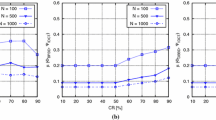Abstract
Nowadays, it is unusual for an electronic system to be without sensors, thus sensing plays an important part in everyday life. To this, the field of image processing is an added advantage as it stores image data and makes it readily available for parallel processing. The wireless sensor nodes over heterogeneous networks exhibit radio communication always with highest energy consumption. Multicore processors are more suitable for real time applications compared to traditional modern microcontrollers of sensor nodes in terms of improvement in their energy consumption rate. To significantly reduce the energy consumption, the usage of off-the-shelf low power microcontroller with appropriate processing core has to be considered. The proposed CEMulti-core architecture incorporated with the MIPS single core processor and multicore processor is simulated and the experimental results are compared and analyzed for their speedup, clock cycles and the time required for execution. Thus enabling the sensor node over heterogeneous networks to process large sized images with increase in energy efficiency.















Similar content being viewed by others
References
Munir, A., Gordon, A., & Ranka, S. (2014). Multi-core embedded wireless sensor networks architecture and applications. Parallel Distributed Systems, 25(6), 1553–1562.
Lan, Y., Xiuli, C., & Meng, W. (2009). An energy balanced clustering routing algorithm for wireless sensor networks (pp. 316–320). San Francisco: World Congress on Computer Science and Information Engineering.
Sheik, A. K., Ali, H., & Lewis, T. (1995). Designed the multicore processor for industrial applications. Journal of Computer, 28, 27–37.
Talal, M., & Abdullah, M. D. (2007). Survey on task scheduling for multicore systems. IEEE Community, 2(11), 142–147.
Hempstead, M. D. (2009) Accelerator-based architectures for wireless sensor network applications.
Tuah, N., Ismail, M., & Jumari, K. (2012). Energy efficient improvement for heterogeneous wireless sensor networks. London: Open Access Publisher.
Anastasi, Giuseppe, Conti, Marco, & Di Francesco, Mario. (2009). Energy conservation in wireless sensor networks: A survey. Journal of Ad Hoc Networks, 7(3), 537–568.
Raghunathan, V., Ganeriwal, S., & Srivastava, M. (2006). Emerging techniques for long lived wireless sensor networks. IEEE Communications, 44(4), 108–114.
Ansari, J., Pankin, D. (2008). Radio-triggered wake-ups with addressing capabilities for extremely low power sensor network applications. In 5th European conference on wireless sensor networks, Italy.
Armstrong, T. Wake-up based power management in multi-hop wireless networks. http://www.eecg.toronto.edu/~trevor/Wakeup/ index.html.
Cui, W., Meng, X., Yang, B., et al. (2017). An efficient lossy link localization approach for wireless sensor networks. Frontiers of Information Technology & Electronic Engineering, 18, 689. https://doi.org/10.1631/FITEE.1601247.
Chen, J., Yatskiv, V., Sachenko, A., et al. (2017). Wireless sensor networks based on modular arithmetic. Radioelectronics and Communications Systems, 60, 215. https://doi.org/10.3103/S073527271705003X.
Pati, B., Sarkar, J. L., & Panigrahi, C. R. (2017). ECS: an energy-efficient approach to select cluster-head in wireless sensor networks. Arabian Journal for Science and Engineering, 42, 669. https://doi.org/10.1007/s13369-016-2304-2.
Zhu, L., Yao, C., & Wang, L. (2018). Optimal energy efficiency distributed relay decision in UAV swarms. Wireless Personal Communications. https://doi.org/10.1007/s11277-018-5321-5.
Parameswari, M., & Sasilatha, T. (2017). Cross-layer based error control technique for WSN with modified relay node selection and corruption aware method. Wireless Personal Communications. https://doi.org/10.1007/s11277-017-5121-3.
Author information
Authors and Affiliations
Corresponding author
Rights and permissions
About this article
Cite this article
Suresh, A., Reyana, A. & Varatharajan, R. CEMulti-core Architecture for Optimization of Energy over Heterogeneous Environment with High Performance Smart Sensor Devices. Wireless Pers Commun 103, 1239–1252 (2018). https://doi.org/10.1007/s11277-018-5504-0
Published:
Issue Date:
DOI: https://doi.org/10.1007/s11277-018-5504-0




